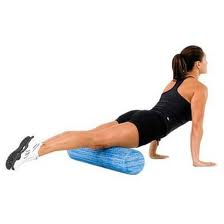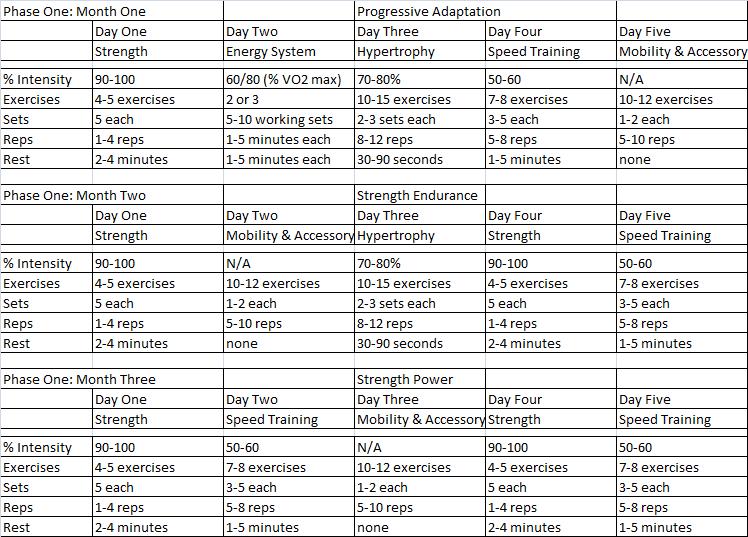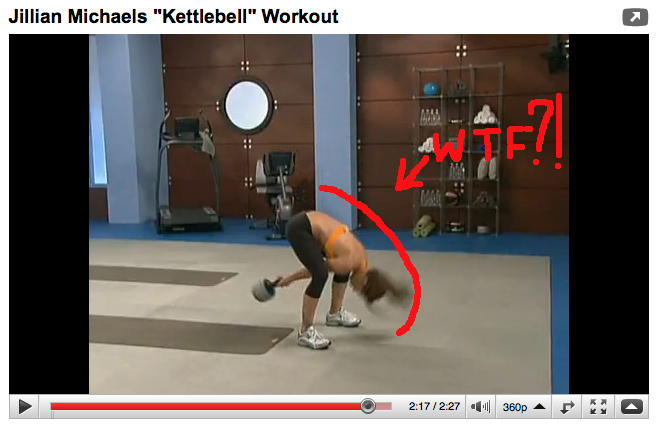Program Design 101: Getting your Swole On For Dummies: Part 2
So in yesterday’s post, I talked about how important it is to get a goal and make damn well sure you keep it in the forefront of your mind with everything you do in your training program. Today we’re going to go through how to actually achieve that goal. Yay!!
Point #4: Don’t Be Everything to Everyone
Let’s say we have someone come through the doors looking to “get stronger” and “tone up.” Aside from wanting to throw down some Mortal Kombat finishers on them for not steppin correckt with a decently specific goal (NOTE: Mortal Kombat now has a Freddy Kreuger character!!!), suffice it to say that they will need work on pretty much, oh, EVERYTHING related to fitness.
So where do you start? Since they need everything, should you start with a little of everything? Break each workout down to involving one set each of strength, hypertrophy, cardio, corrective exercises, flexibility, movement preparation, bosu bootcamp, spinervals, and pink dumbell kickbacks? This would look somewhat like Armageddon and leave the person feeling like crap, as well as not getting them anywhere. Sure, they’re burning calories, but beyond that, they aren’t moving in any specific direction.
This is where Periodization comes in to play. This allows us to break down a program into chunks of time, sort of like business quarters or monthly totals in the commercial world. This give someone a chance to focus on one or two specific components of fitness and the acquisition of a goal versus running wild and crazy.
A competitive athlete would break up their calendar into a few different distinct phases: in-season, post-season, transition (re: golf), Off season, Training camp prep, and finally back into the next season. You can start and stop this anywhere you see fit, but the calendar typically remains the same, except in the case of the Edmonton Oilers, where they can just skip the post-season altogether and get an early start on golf.
If we have someone looking to gain strength and pack on some muscle in the next three months, we could break down a 5-day a week program somewhat like this:
Once this phase is finished, we can begin working on another direction, such as focusing on energy system development, hypertrophy, skill-based training, etc. By focusing on one or two components specifically, you can get more specific results in faster time and to a greater extent than by doing a little of everything. Think of it another way: to get better at shooting free throws, the best way to do it is to shoot free throws. It’s not dribbling, sprinting, rebounding, or any other aspect of the game. Shooting free throws gets you better at shooting free throws, just like specific training gets you better at the component you’re training for. Crazy, right??
Point #5: Exercise Considerations
This one’s going to be a bit more random than the other points. So once you’ve assessed, goal-set, periodized, and developed a plan, it’s time to start working, right? Almost. Next up comes how to actually structure a workout with the exercises to be used.
A typical flow for a workout would go something like this:
Warmup, Strength Training, Cardio (gag), stretching, and signing the check on the way out.
A better flow that seems to work extremely well for a lot of people goes something like this:
General warmup, specific mobilization and SMR work, movement preparation, specific conditioning, general conditioning, accessory and assistance exercises.
Damn, that even SOUNDS sexier, doesn’t it? I wanna get me some of THAT!!
 While there are literally thousands of different combinations of ways you can arrange exercises in a program, there are a few simple rules that you should always try to adhere to:
While there are literally thousands of different combinations of ways you can arrange exercises in a program, there are a few simple rules that you should always try to adhere to:
1. Biggest demand exercises first, lowest demand exercises last
2. Technical exercises early in the workout when you’re still fresh, killers that have no technical requirements for the end
3. Link similar body parts for overload, dissimilar body parts if working on technique and max weights or performance
4. Core isolation, if any, should be done at the end when it doesn’t need to operate at its’ best
5. Unless your goal is to become a bodybuilder, stop doing body part splits. It doesn’t work.
The goal shouldn’t be to “trash” the body, but to make it operate at a higher level. This means leaving something in the tank occasionally, working to maximum other times, and refining technique constantly. Beyond that, common sense should reign supreme. Doing front squats will not only make the legs work, but also tax the hell out of the mid and upper back, so doing chinups right after may be great from a convenience standpoint, but it will result in a lot of fatigue and poor performance on the chins.
Likewise, training 3 pushing movements to each pulling movements will probably increase the likelihood of developing some sort of shoulder issue, so switch the script and make it more like 2 pulling movements per pushing movement to help protect the shoulder.
Posterior chain work should always be a primary focus, as too many exercises rely on the anterior chain, and the majority of low back pain comes from a breakdown in the relation of posterior chain strength to anterior chain strength. A strong ass and strong hammies are going to go a long way to preventing back pain, trust me on this one.
The following exercises should be avoided at all costs. Primarily because they do nothing for you, but secondarily because you look like a douche when doing them:
barbell or dumbell wrist curls while leaning on a bench
Standing 1-arm overhead dumbell tricep press
Smith quarter squats with 500 pounds
Using the smith machine for anything other than an adjustable fixed bar
Concentration curls
Machine inner-outer thigh
Whatever the hell this crap is
As long as I’ve been involved in fitness (coming up to 15 years now), I’ve heard stories of someone trying something or doing something different and having mind-numbingly amazing results from it.
Ohmigawd!!! I used this new fancy-ass piece of equipment and my world simply imploded, it was so good!!
Well, I knew a guy who took this supplement and gained 30 pounds of solid muscle in 48 hours. True story!
I read this article once that said to eat baby food and I’d get lean. So I did, and now I can’t go 20 minutes without having explosive diarrhea, but I feel like I lost a few pounds already!!
Great, I’m glad it worked for you. But before I try it out on someone paying me money, or consider doing it myself, I want to see the research on it. I’m not talking the anecdotal sample size of 1 type stuff where it’s easy to gloss over some of the important variables. No no, friend, I want to see the cross-over studies involving double-blinding and some form of statistical analysis going on, and the conclusions should also measure what they were trying to measure. None of this claiming that crunches will wreck your lumbar spine because pig cervical vertebrae crumbled after hooking them up to a machine that squeezed the hell out of them for a few days. (Note: if you don’t follow this logic, check out this article by Bret Contreras and Brad Shoenfeld HERE to defend the crunch).
Research is what allows us to determine what’s real and what’s made up in the world of fitness and enterprise. Sure, I could simply say that my own lab produced specific results that showed my newest product promoted everything from increased muscle mass to a cure for cancer, but that doesn’t mean I was telling the truth or even measuring anything close to what I claimed to measure. There’s also the little bugger known as the placebo effect, where if someone thinks an intervention will result in positive improvement, they get those kinds of improvements!!
The best sources for research are journal searches, such as through PubMed, as well as textbooks. The downside is that you have to pay for both, but you tend to get what you pay for. Other venues are workshops, courses, conferences, and other places where guys have to give references on what they’re saying based on research that has proven one way or another that something has been proven beneficial for something else.
Well, I’d love to keep chatting about program design, but my ride’s here and I have to head to the airport to go to Toronto. If anyone’s going to be in the area this weekend, drop a comment and maybe we can get in either a lift, dinner, or tip a few pints to celebrate me getting hitched, whatevs.
Have a great weekend, everybody!!



6 Responses to Program Design 101: Getting your Swole On For Dummies: Part 2